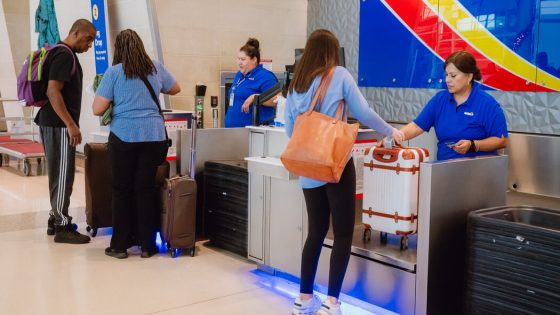On February 18, 2025, Southwest Airlines announced plans to cut 1,750 jobs, marking the first major layoffs in the airline’s 53-year history. The job cuts will primarily affect corporate positions, representing about 15 percent of the workforce, and are expected to be completed by the end of June.
- Southwest Airlines announces 1,750 job cuts.
- Layoffs focus on corporate positions.
- CEO Bob Jordan calls decision unprecedented.
- Job cuts aim to save $210 million.
- Southwest maintains strong customer satisfaction.
- Airline's history of profitability disrupted by COVID.
The decision to implement layoffs comes as Southwest Airlines faces pressure to reduce costs and improve efficiency. CEO Bob Jordan described the layoffs as “unprecedented” and emphasized the need for the airline to transform into a leaner organization. This restructuring follows a challenging period for the airline, which had maintained a streak of profitability for 47 years until the pandemic hit in 2020.
Key details of the layoffs include:
- 1,750 jobs will be cut, primarily from corporate positions.
- 15 percent of the corporate workforce will be affected.
- 11 senior leaders will be among those laid off.
- Estimated savings of $210 million this year and $300 million next year.
- One-time severance costs are projected between $60 million and $80 million.
In addition to the layoffs, Southwest Airlines is undergoing significant changes, including a shift away from its traditional seat-yourself policy to assigned seating. This move is part of a three-year plan initiated by Jordan to enhance operational efficiency and respond to pressures from investors, including Elliott Management, which previously sought changes in leadership. Despite the challenges, Southwest remains a leading carrier in the U.S., known for its customer satisfaction and operational scale.
The layoffs at Southwest Airlines represent a significant shift in the company’s approach to managing its workforce and costs. As the airline moves forward with its restructuring plan, it aims to maintain its competitive edge in the industry while addressing the financial challenges that have arisen in recent years.





![Curve [CRV] eyes $0.55 resistance: Why a 12% rise could be on the cards](https://news.faharas.net/wp-content/uploads/2025/03/Curve-CRV-Targets-055-Resistance-–-A-12-Surge-Could.webp-560x315.webp)



























